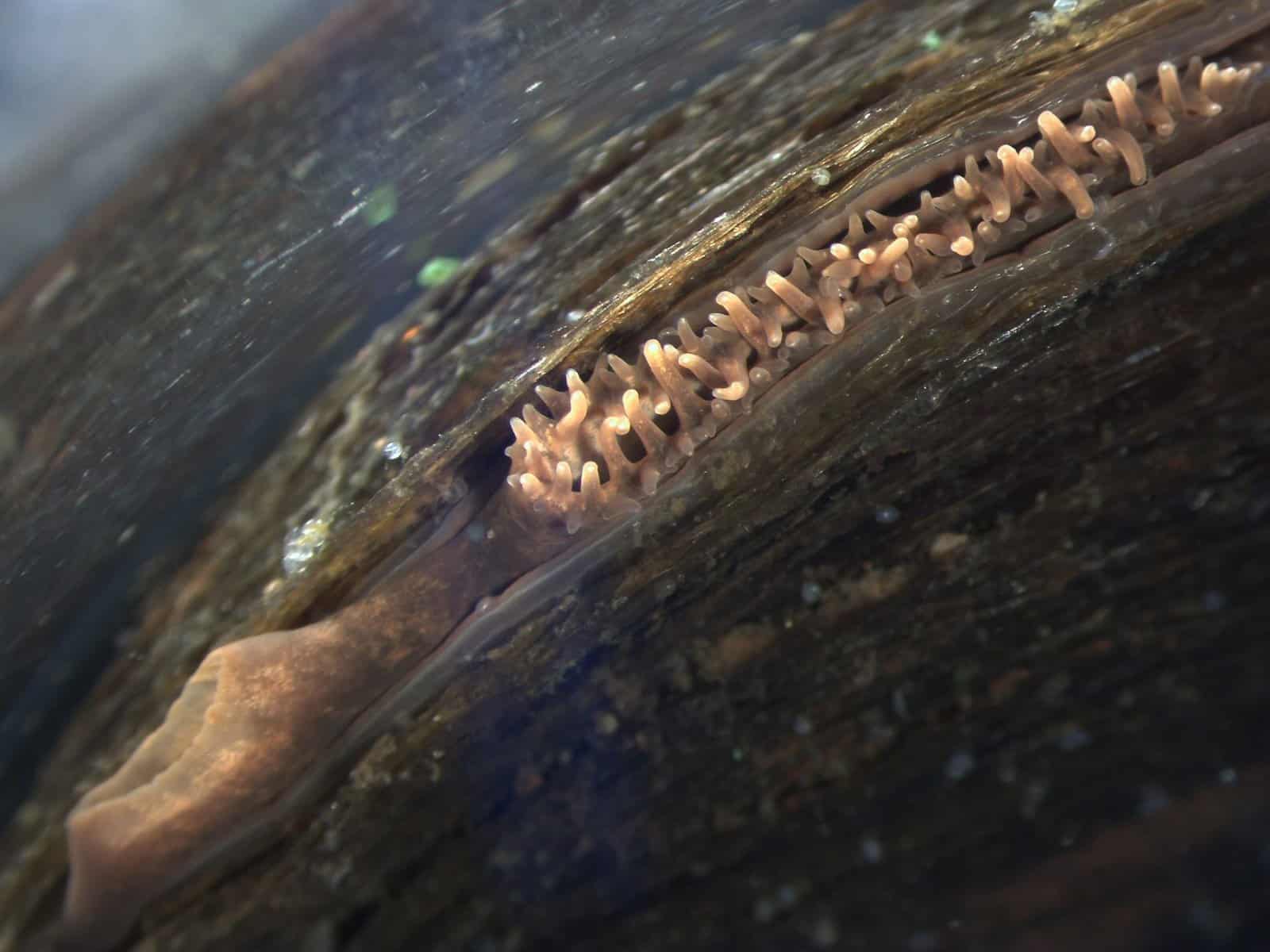
Written by Tom Moore.
Kākahi (freshwater mussels; Echyridella species) are taonga species that were valued as a historical food source and cutting tool, and now as water-filterers that can help clean waterbodies and maintain aquatic ecosystem health in Aotearoa. We know invasive aquatic weeds can smother the habitat kākahi call home, but do the weeds create conditions that are fatal for our native water-filters? Furthermore, if weeds threaten kākahi, can current weed management tools be modified to protect mussel beds?
A recent publication from the University of Waikato revealed how dense beds of invasive aquatic weeds can produce overnight anoxia (no oxygen, caused by hornwort; Ceratophyllum demersum) and hypoxia (low oxygen, caused by both dense beds of Egeria densa and C. demersum) where kākahi live. Oxygen depletion relates to the process by which aquatic plants photosynthesise to increase net oxygen production during the day, but stop at night when respiration causes oxygen to be consumed. Our study found these events occurred over the New Zealand summer period, at the lake bottom in the nearshore weed beds of Karāpiro, the most downstream hydrogeneration reservoir on the Waikato River.
Such anoxia and hypoxia events are not only detrimental to kākahi directly, they may reduce abundances of fish which serve as hosts for mussel larvae, and can also promote the release of high levels of ions such as ammonia. These conditions are particularly detrimental to sensitive juvenile mussels, which are thought to live in surficial sediments and feed using their muscular foot rather than pumping water through their siphons, like adult kākahi.
After our initial research confirmed that invasive aquatic weeds can produce anoxia and hypoxia events during summer, we then wanted to characterise the conditions later in the season, when the massive accumulated weed biomass dies-back (senescence) and consumes high levels of oxygen dissolved in the water as it decomposes. We expected prolonged anoxia and hypoxia events would be produced by this senescence, but the answer was revealed in an unexpected way.

During a week-long deployment of an oxygen logger inside a dense invasive weed bed in the lower reservoir, herbicide was serendipitously sprayed on one of our study sites as part of the annual Karāpiro weed control programme. Rather than capturing changing oxygen concentrations related to weed senescence, we logged the impact of human-induced decomposition caused by herbicide application, which considerably dampened daily variations in dissolved oxygen and led to prolonged anoxia and hypoxia events at the lake bottom.
Although it appeared dense invasive weed beds can create conditions that threaten kākahi, and these adverse conditions can be exacerbated by weed spraying, there may be ways to limit the effects on mussel beds. One option might be to increase water mixing by manipulating Karāpiro inflows and outflows to reduce anoxic and hypoxic events, especially at key times when massive weed biomass accumulates and during senescence or weed spraying.
Our research indicated that the mixing of water related to normal hydropeaking operations (variable inflows from the upstream Arapuni hydropower station) appeared to influence the duration of anoxia events and magnitude of hypoxia caused by dense invasive weed beds in the upper-riverine section of Karāpiro. Understanding if this effect can be extended further downstream towards the lower-lake section would be an important future research direction for kākahi conservation.
This latest research is the first of two scientific publications – one accepted and one in review. The first publication establishes the link between invasive weeds and adverse conditions, and the next publication will detail how kākahi populations respond to dense invasive weed beds and overarching hydrology.
You can read the article here.